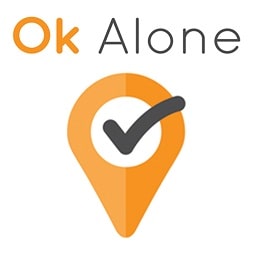Using Focus Groups to Gather Risk Information for Your Lone Worker Safety Policy
Most often, the process of gathering risk information for your lone worker safety policy begins in a general sort of way. You might make a list of the obvious hazards, observe your employees in their working environments, or carry out a short and simple survey to get a better sense of the unique risks your lone employees face. Chances are, these methods will uncover a number of areas worth exploring in more detail.
One of the best ways to get to the root of these newly exposed safety issues is to put together employee focus groups. In these small and safe group settings, employees will feel at ease and will be more likely to freely share detailed information and deep insights about the role safety plays in lone worker policy and procedure.
Who should run the focus groups?
All focus groups should be run by two moderators: one who facilitates the discussion, and another who records the conversation, takes notes (on body language, for example), and helps keep track of time.
You don’t necessarily have to hire someone outside of your organization to facilitate the focus groups. It often works to use a neutral party like a human resources professional or even someone from a different department, as long as they have knowledge of the subject and can listen attentively and remain unbiased. Just be sure they aren’t a direct superior and that no conflicts of interest will get in the way of an honest and comfortable discussion.
How big should a focus group be?
In general, focus groups should have between 6 and 12 participants. Having too few people will stifle the discussion, and having too many could lead to chaos. That said, it all depends on the size of your business. For smaller organizations, it might work better to speak with the entire staff rather than leave a few members out. For larger organizations, it’s best to break it up.
How many focus groups do I need?
If a particular safety issue is complex and affects many lone employees across a range of departments/roles, you’ll need at least two focus groups (but no more than four). For issues that pertain to more specific areas of the business, one focus group should do the trick.
Who should be in the focus groups?
The groups should consist of lone employees who share the same safety challenges, and who have similar authority levels (employees could be uncomfortable talking freely in front of their managers or supervisors).
How should the conversation flow?
The facilitator should warm up the group by first introducing general questions about the topic of safety. Are the employees aware that lone workers face unique risks? Do they understand the need for a lone worker safety policy? Do they currently feel safe in the workplace?
Next, the facilitator should ask follow-up questions to gradually begin to hone in on the issue(s) at hand. After the key questions are tackled, the discussion should end with suggestions for improvement and subsequent actions.
All questions should feel natural, be open ended, and only address one issue at a time.
What’s next?
After your focus groups have concluded, it’s time to take action. Have the meetings transcribed and summarized, then set aside a block of time to go over all the information at once. Look for common themes (hazards, questions, problems, etc.) and record your findings. Then, make a plan to eliminate as many of these issues as possible, whether it’s by removing risks entirely, taking measures to control risks, improving training, or clarifying lone worker policy and procedure.
Even after all your precautions, it’s likely that some risks will still remain. So, what you need to do next is compile the information and include it in your lone worker risk assessment as part of your lone working policy: the hazards that exist, the people they may affect, the possible outcomes, and the control measures in place.
Focus groups are a key way to collect risk data for your lone worker safety policy, but they’re only a piece of the puzzle. So, talk to your employees often, hold regular meetings, review all safety incidents, and update your policy regularly. And of course, keep yourself informed of all the latest and most effective tips, tools, and technology.
Interested in comparing the many safety monitoring systems out there? Download our free comparison guide and see which system suits your needs best.

The Ok Alone team writes informative articles about lone working. Through our articles, we aim to educate readers on the benefits and best practices of using our lone worker app, and how Ok Alone can help mitigate risks and enhance communication between workers and monitors. Learn about other areas including legislation, risk management, and legal compliance plus lone worker features such as man down, high-risk check ins and location monitoring.

